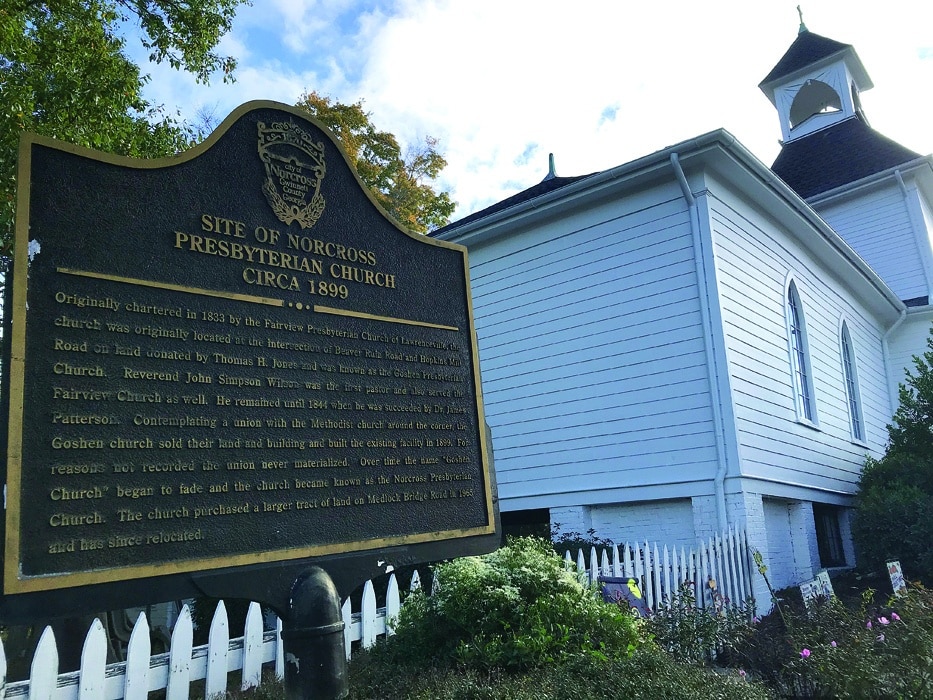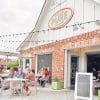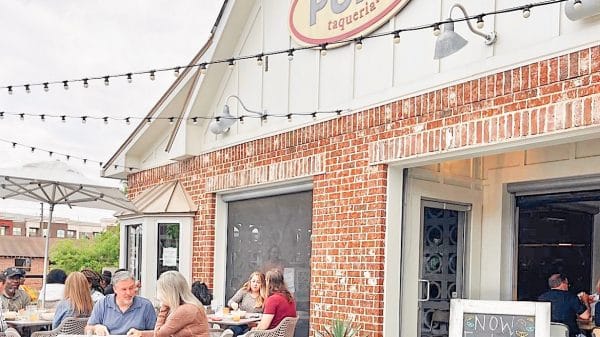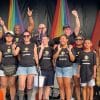Church historian chronicles NPC’s journey from pre-Civil War to today and reveals the humanity behind the doctrine.
To understand the goals and mission of any modern-day church, it’s important to first acknowledge its history. Presbyterianism has had a presence in the United States since colonial times and has exerted an important influence over broader American religion and culture.
Although the Presbyterian Church has deep roots in reformation theology, like many Protestant religions, its followers have often been referred to as the “frozen chosen,” a reference to the reasoned, non-emotional approach to worship.
But Norcross Presbyterian Church (NPC) has proven over time that it leads by its heart as well as its doctrine.
In 1899, the church built a charming white chapel with a mellow-toned bell in its tower, and it was home to Norcross Presbyterian Church for 73 years. In the 1960s, NPC began to outgrow the space and by 1970, it had moved to Medlock Bridge Road. Still, the historic church building endured.
Eventually, the church found itself needing to downsize. “We were looking for a place to move and this building was up for sale,” said Jason Bernardo, an administrator and historian at Norcross Presbyterian Church. “It was the perfect size for our current congregation — and of course, it gives us a tremendous story to tell, moving back into our original building.”
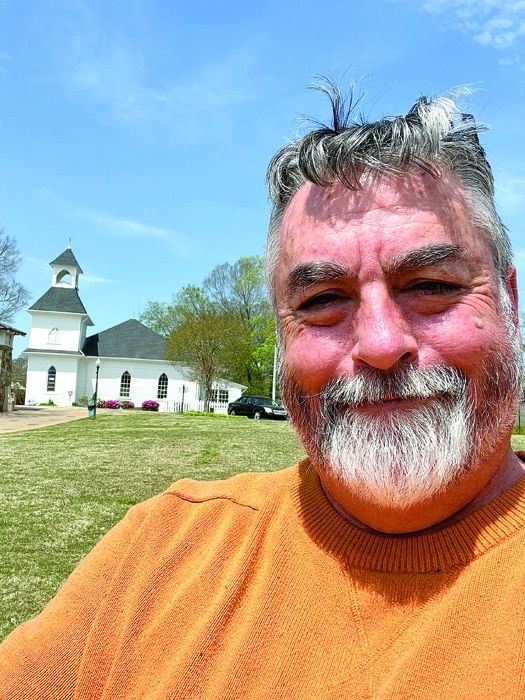
In negotiating the sale, the realtors wanted a history of the church that they could put in the paperwork. That task fell to Bernardo.
“I had become the administrator, which is like the church secretary here, about 10 years ago and had access to all the historical documents, all the session records, session minutes,” said Bernardo.
“I started looking around and looked at the one-page history that we always used. And I thought, well, that might be okay for the needs of the realtor, but it struck me that it didn’t really say much about the church,” he said.
Unlike some other Protestant religions, the Presbyterian Church is run by committees of church elders, often with meticulous record-keeping. It’s that access to such precise documentation that led Bernardo to set out to tell the story of this particular church, beyond the one-pager that highlights a few dates and historical figures.
“It would tell you who the first pastor was, and when the church was founded, and where the churches were located,” said Bernardo. “Then they’d mention the founder and our pastor and that’s basically all that was in the history.”
The years-long search to give a much more accurate account of Norcross Presbyterian eventually turned into a self-published book titled, “Norcross Presbyterian Church: They Will Know We Are Christians By Our Love.”
Quest for lost history
Bernardo’s quest began at the church’s location on Medlock Bridge Road, the second spot that housed the congregation. But the records hadn’t made the journey across town from the original building. The files Bernardo unearthed only went back to the 1970s.
“It turns out that the same project had probably come up a half dozen times over the past 100 years or so. There were several other one-page histories, and they were basically the same,” he said.
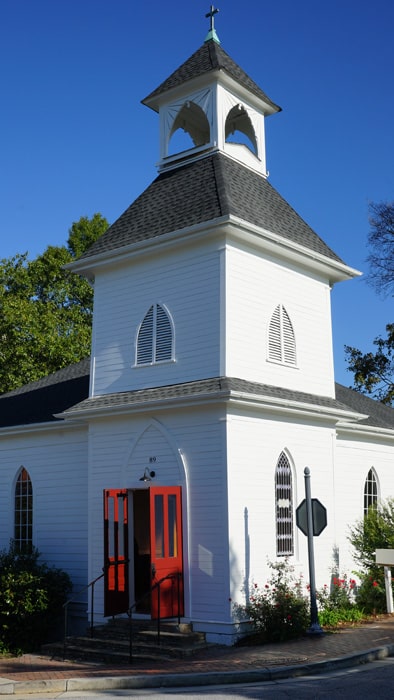
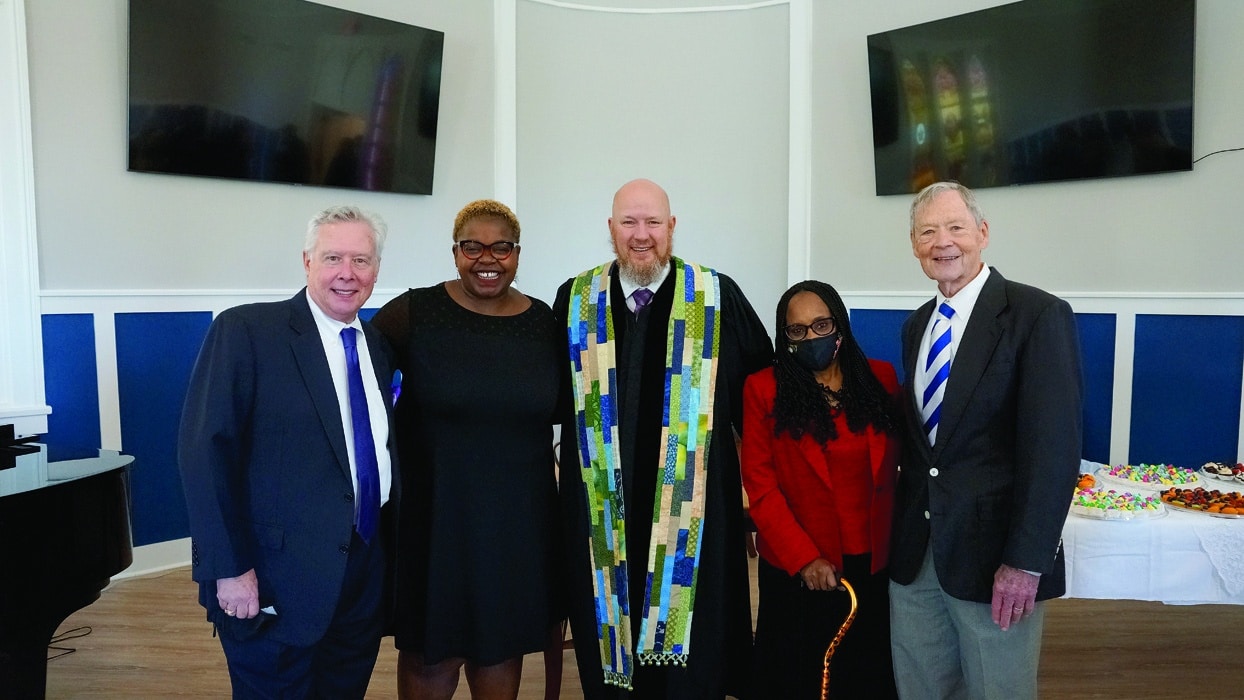
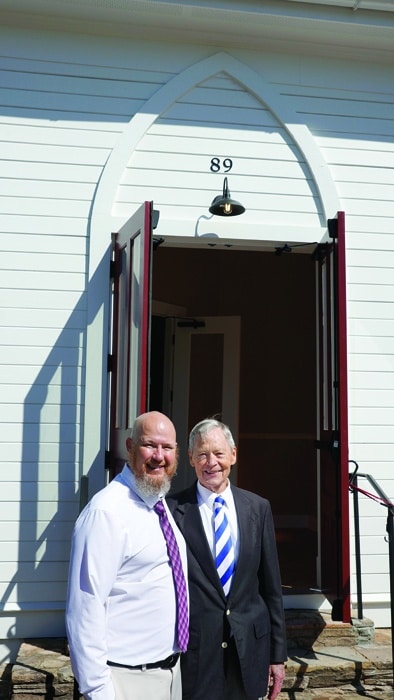
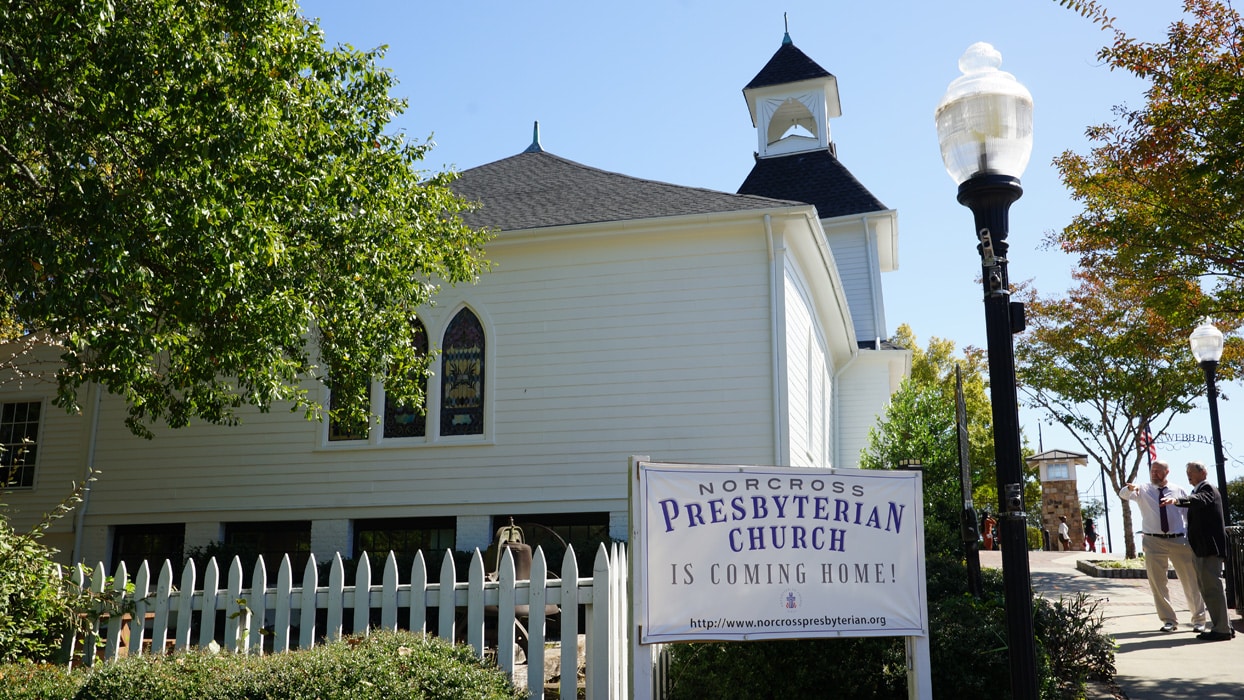
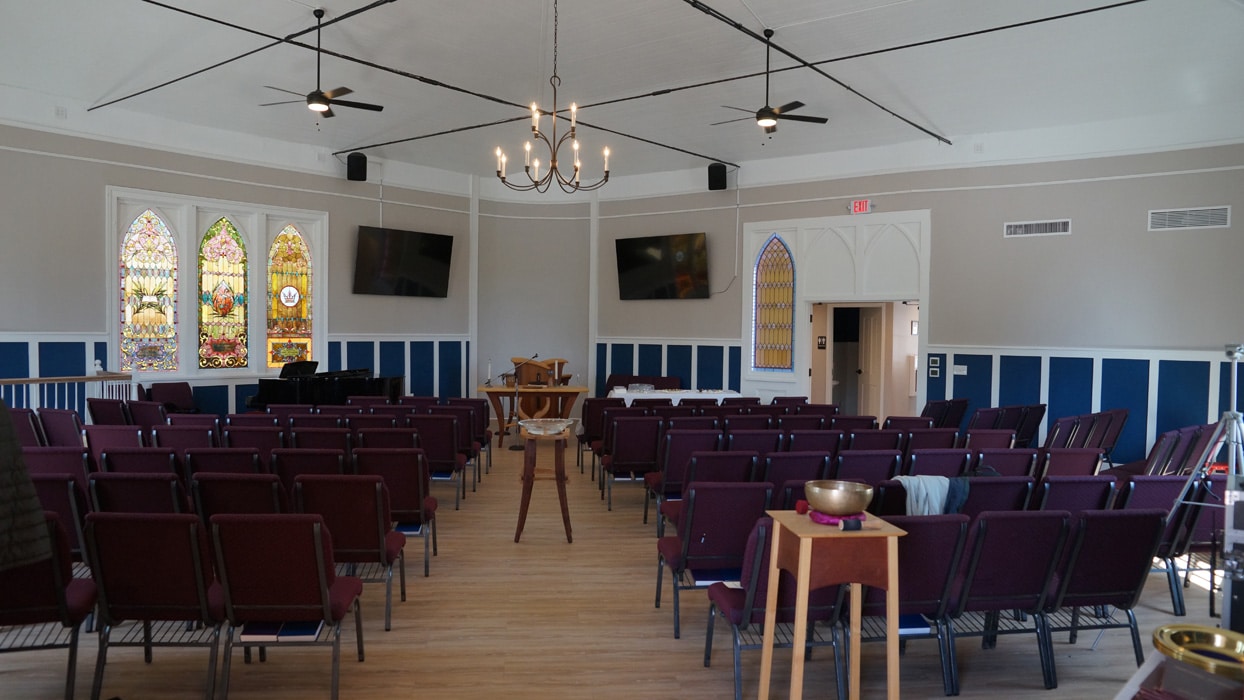
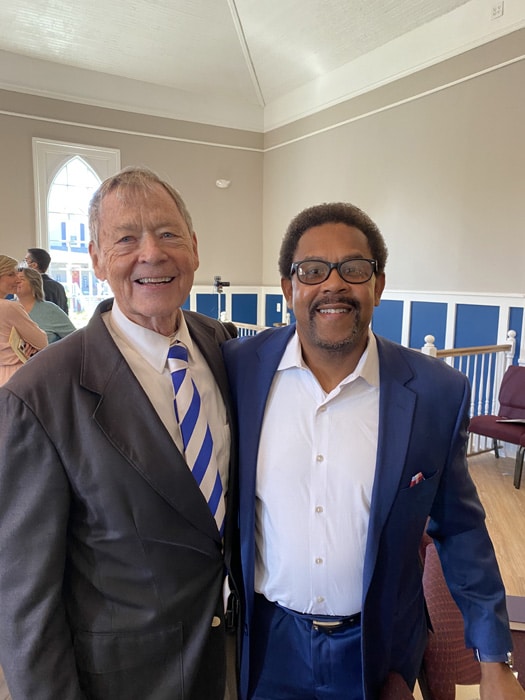
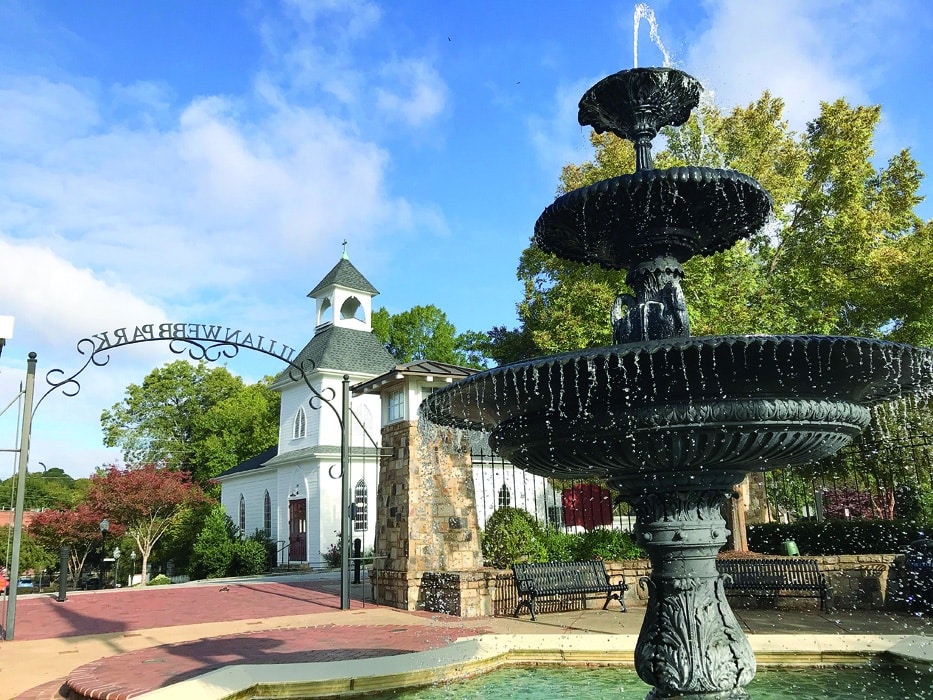
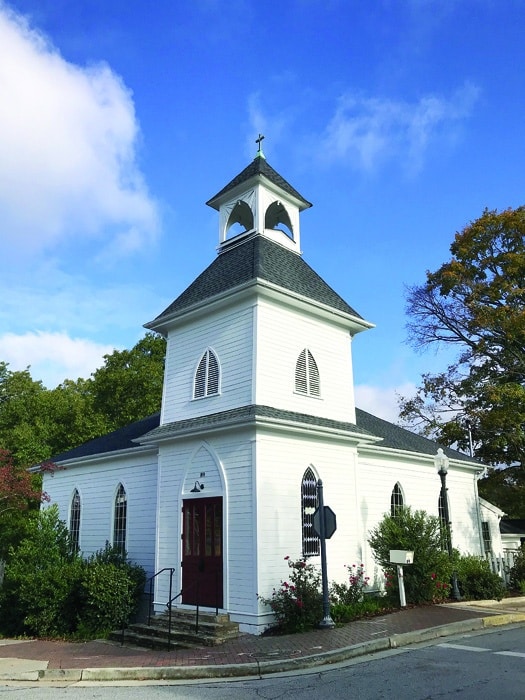
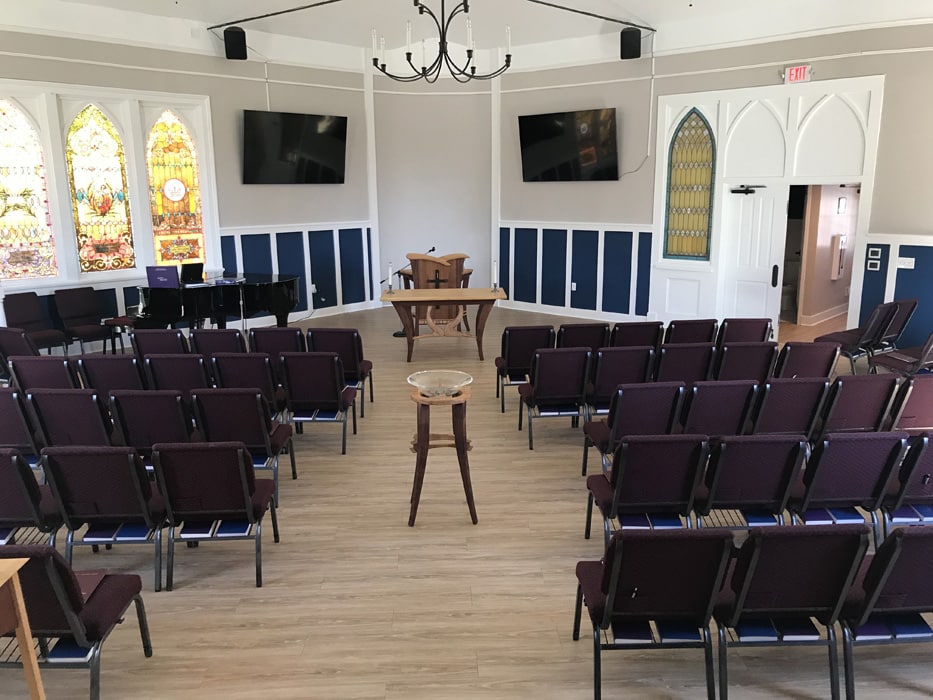
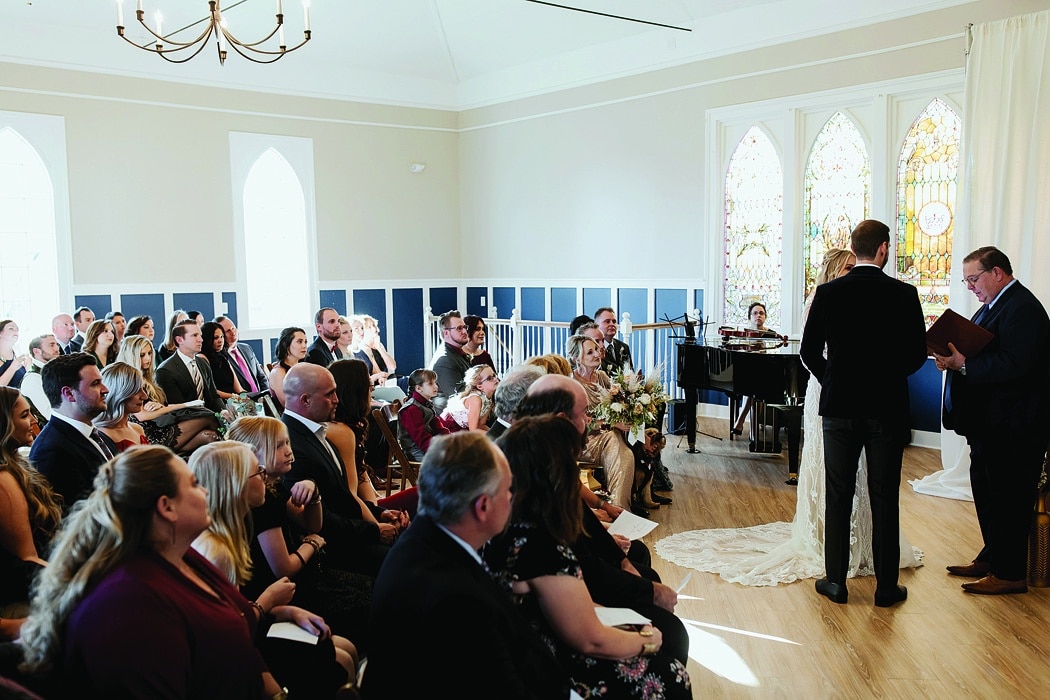
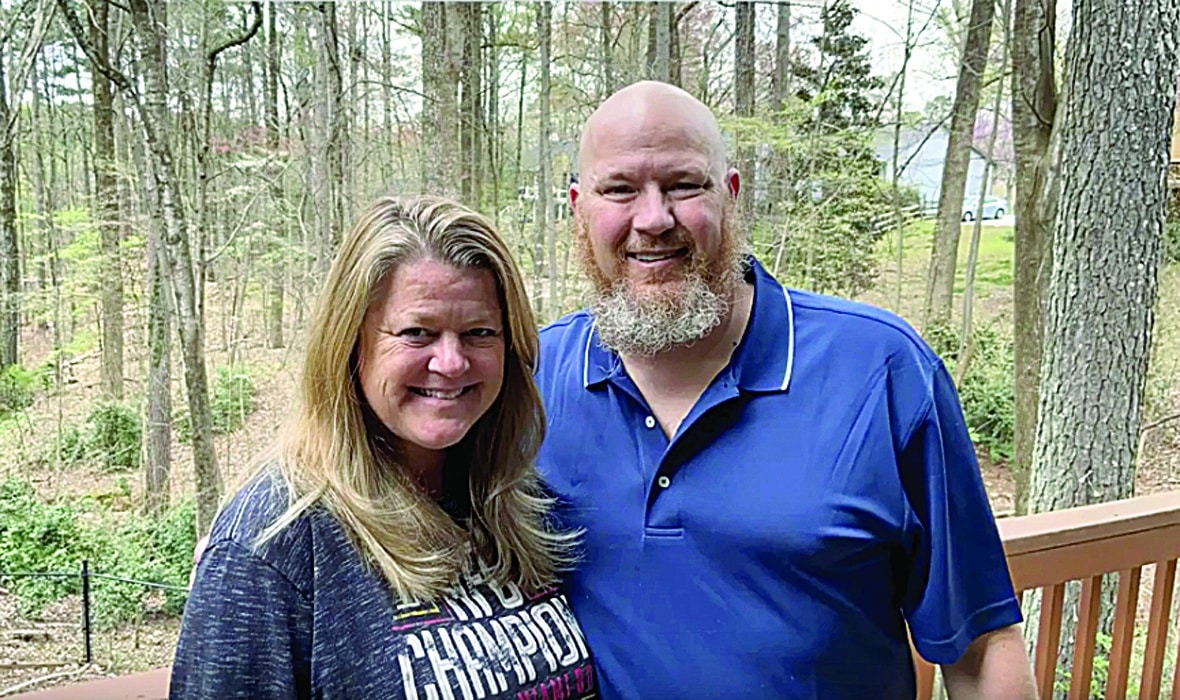
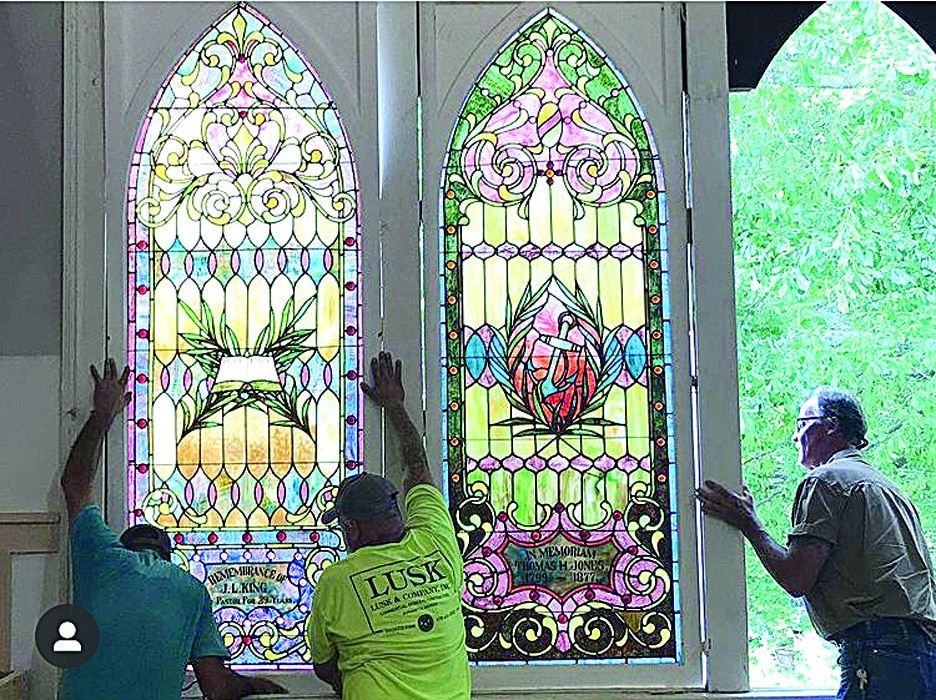
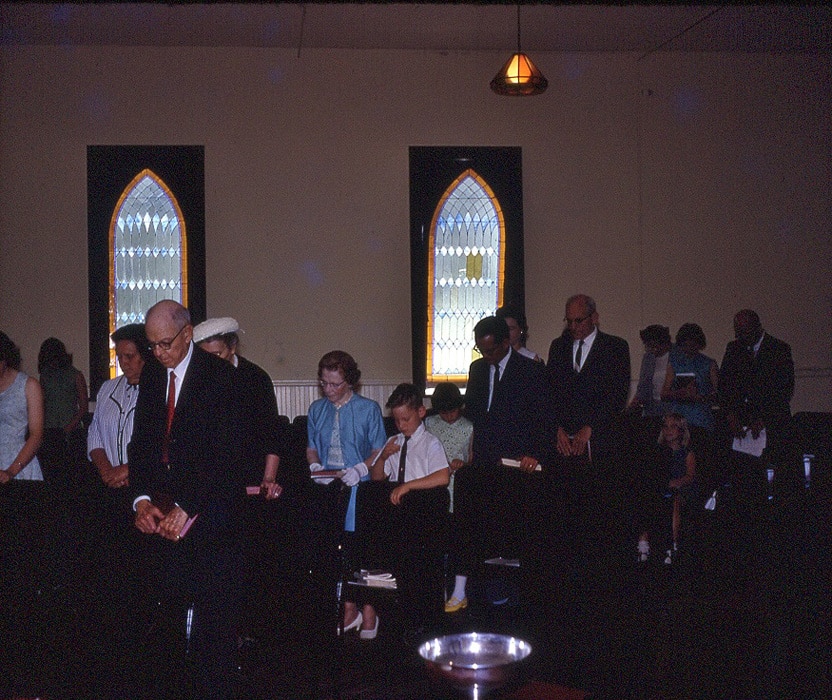
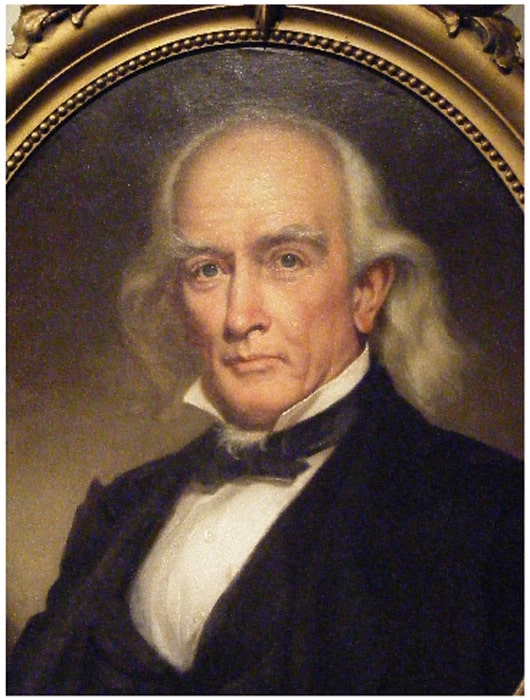
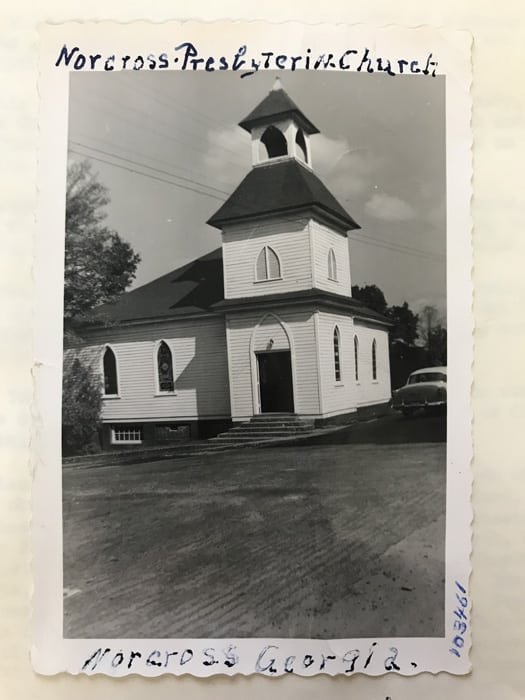
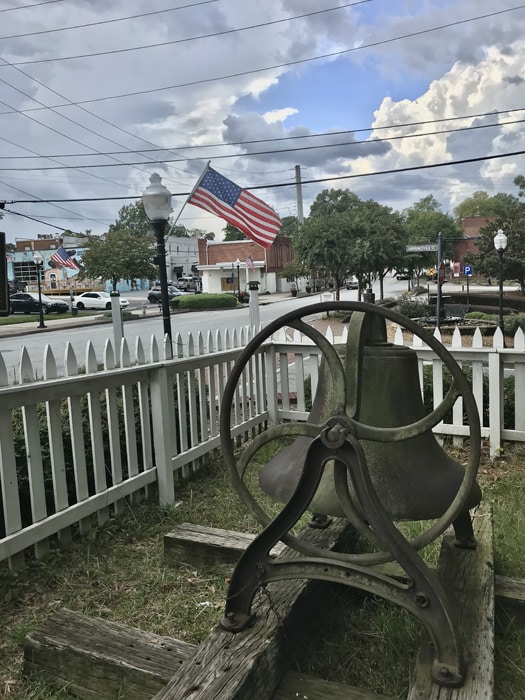
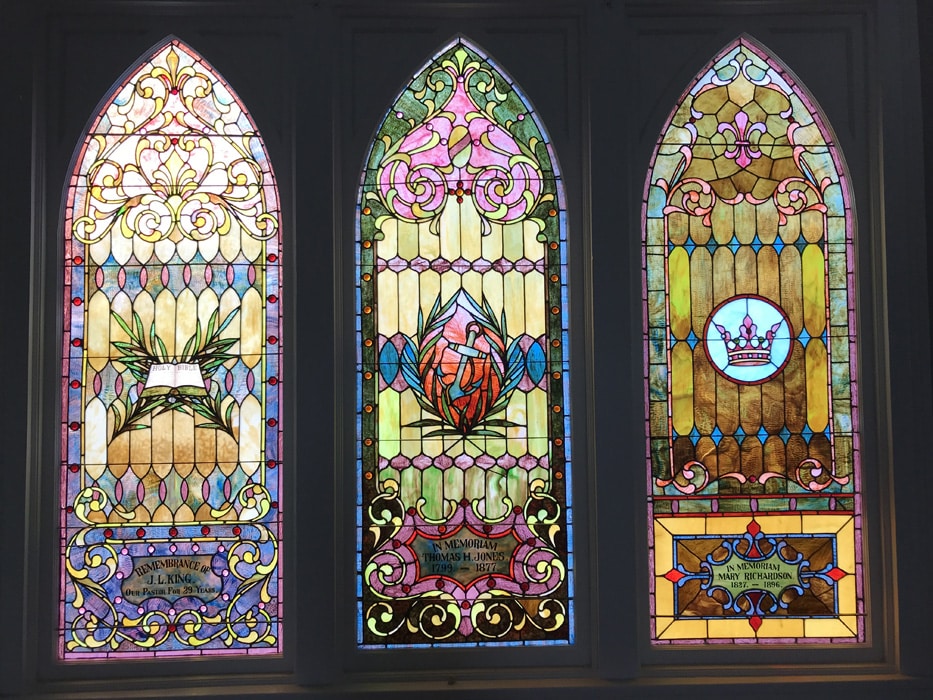
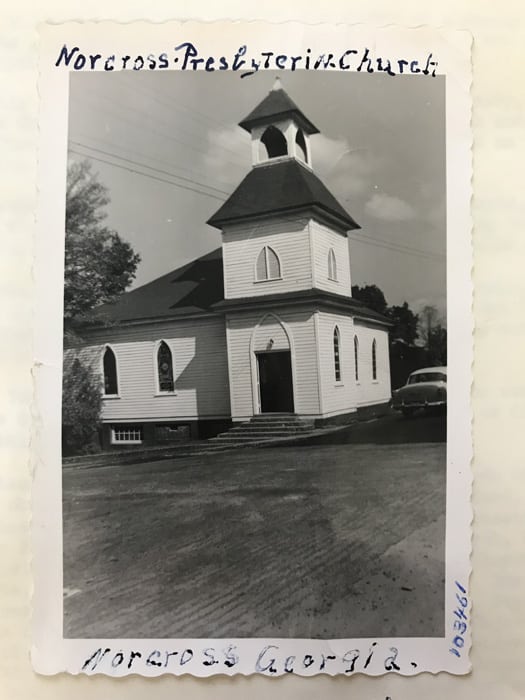
Not one to give up, Bernardo made inquiries to the national body. In between his other duties, Bernardo contacted the Presbyterian Heritage Center, which, at the time, was located in Montreat, N.C., as well as the Columbia Theological Seminary in Atlanta and the Presbyterian Historical Society in Philadelphia.
With so many dead-ends, he couldn’t see the point in going all the way to Philadelphia to find the proverbial needle in a haystack. So, Bernardo vowed to search every nook and cranny in the Medlock Bridge building before the move.
“We’d been in that building for 50 years… and there are so many closets and cupboards and things — it’s a big building,” he said. “So I scoured the whole building, looking for anything that had been shoved in the back of a cupboard or whatever. And I came across quite a bit of scrapbooks and little histories.”
The most important materials were the makings of what looked like a historical record that a previous pastor had been working on.
“There were photocopies of session minutes from the 1850s and the 1870s. They were handwritten in a really nice flourish. The script was small and hard to read, so I’m looking at these things with a magnifying glass,” he said.
Bernardo also came upon a metal box at the back of the cupboard. “It probably had been there for 30 or 40 years. And in that box were about 500 photographs,” he said.
The photos documented the construction of the building on Medlock Bridge Road. There were a couple of photographs of the building at 89 Jones Street being put up for sale.
“I thought, well, I don’t want to let these materials go to waste,” said Bernardo. “I started to see that we had that kind of a story that I originally thought we should have. The history of the buildings wasn’t enough.”
Bernardo wanted the generations to come to know about the people of Norcross Presbyterian Church. So, he took Rev. Lewis Fowler’s notes and began looking in other places where historical records were kept.
“What we wanted was a history of the church, of the mission of the church, a history of the kinds of people that were here and that they were average people with flaws,” he said. “There was a story to be told there. So, I started writing, putting everything together, just a big kitchen-sink version of everything I found out.”
In the search for facts, some mysteries came up. “I can say I solved about one-and-a-half of the three mysteries,” Bernardo said.
Solving decades-old mysteries
The original Presbyterian church in Gwinnett County was the Goshen Presbyterian Church chartered in 1833 by the Fairview Presbyterian Church of Lawrenceville. According to Rev. Fowler’s notes, Goshen Presbyterian was originally located at the intersection of Beaver Ruin Road and Hopkins Mill Road on land donated by Thomas H. Jones.
However, there is no intersection of Beaver Ruin and Hopkins Mill. The closest structure is the current Norcross High School, wrote Bernardo.
The Georgia Historical Society lists a cemetery named Goshen Presbyterian, with the notation that it was established in 1833 and used until 1861. It also claims that it was “gone” by 1979. That’s as close as anyone has come to locating the first Presbyterian church in Norcross.
Another mystery involved the disappearance of a Presbyterian pastor at the start of the Civil War.
“Although Gwinnett County delegates opposed secession, they yielded to the 208-89 majority in favor of the measure,” wrote Bernardo. Shortly after the vote, Goshen Presbyterian’s pastor, Rev. W. C. Smith, was reported to have abruptly left for his home above the Mason-Dixon line.
“He fled because he was suspected of being a Union spy and Northern spy,” said Bernardo. He explained that in the Presbyterian Church, the congregation doesn’t really have a choice over who their pastor is going to be. The presbytery, the governing body, will send some candidates who might come from anywhere in the country.
“At that time, prior to the Civil War, it was probably common for there to be pastors in the South who would come from the North,” he said.
The third mystery has to do with one of the three stained-glass windows that have dedications on them. It’s in memoriam Mary Richardson.
“No one in our church today knows who Mary Richardson was,” Bernardo said. “There’s no mention of her… in the church records, and yet she is forever memorialized in this fantastic stained-glass window.”
It turns out she was married to the only doctor in the area and was the head of the church nursery. She’s mentioned, in the Norcross Presbyterian Church session records, as being a member in 1873. That’s the earliest mention of her, and it’s at that time — 1870 — when Norcross was founded,” said Bernardo.
He found an obituary in the Atlanta Journal from July 4, 1896 that said Richardson was “of a gentle disposition and loving, charitable deeds were part of her life.” When the Jones Street building was erected three years later, she held a place of honor with a dedicated window.
Precursors to diversity, inclusion
One of Norcross Presbyterian’s most notable attributes was that it embraced civil rights and diversity early on. Bernardo came across proof of this while going through slave narratives.
“In the 1910s and 1920s, there was a bunch of interviews with the last surviving enslaved persons,” said Bernardo. “There are lots of books containing these interviews of what slavery was really like.”
Bernardo stumbled upon a document that mentioned an enslaved person named Polly who was owned by one of the original founders of the church. “The description we have of our church at that time was that there was what they called a “slave gallery,” which would be [used] if there were some of the enslaved persons that were brought to church on a Sunday. They sat in a separate section of the church,” he said.
The fact that the church had an area for slaves was evidence that they were considered to be children of God and worthy of being saved, he wrote. Bernardo also found evidence that during the early days of the Civil Rights movement, NPC was receptive to desegregation and other equal rights.
Clara Nesbit, a descendant of enslaved people owned by ferry operator Sylvester Nesbit, approached the Norcross Presbyterian Women’s Auxiliary seeking support to attend a Negro Women’s Conference in Atlanta. Afterward, she came back to the women’s group and gave an update of what had happened. Clara Nesbit was mentioned in records several times throughout the 1940s and 1950s.
“This church would have been all white at that time,” said Bernardo, adding that it had a mission to help educate Blacks. “This was before the Civil Rights movement got going and she was planting seeds. And then you fast-forward just a little bit into the middle of the 1960s where Pastor Fowler stood up for desegregation.”
Bernardo added that not everyone was as liberal-minded, however.
“Rev. Fowler had preached at the Central Baptist Church — an African-American church founded by Perry Nesbit’s wife,” Bernardo said.
The pastor at the time was Fred Taylor who went on to become the Director of the Southern Christian Leadership Conference. Rev. Fowler turned around and invited Rev. Taylor and his wife to visit at Norcross Presbyterian on a Sunday.
“They were the first …[Blacks] to ever set foot in the sanctuary. And two of our elders got up and walked out,” said Bernardo.
The very next day, the church elders called a meeting to establish guidelines on what to do the next time a person of color would come to attend worship service. “At the end, they did the right thing,” said Bernardo. “They said, ‘We’re going to treat whoever walks in that door just like anyone else.’”
Bernardo said that statement was a turning point in race relations — at least among the parishioners of NPC at that time. “Some of them were very unhappy with Pastor Fowler. But then he tells a story that years later, those same people were thankful for him.”
Bernardo pointed out that, unlike some other denominations, the congregations of Presbyterian churches are pretty much in charge. Although the pastor is the leader of a church, he’s just one voice among the elders.
The history of a people
In the forward of the book, the current pastor, Rev. Dr. Matthew M. Fry, noted that the book outlines “the history of a people who followed their hearts and their understanding of God.”
“Sometimes they made some decisions that we would consider questionable by today’s standards. Other times they made decisions we would consider brave,” wrote Rev. Fry.
Going forward, the church continues to do what it believes is best for the community. In its new / old space since October, it is learning how it can serve the needs of those around them.
“There’s a saying in this particular denomination,” said Bernardo. “The PCUSA is reformed and always reforming. So, especially since the 1960s, there has been a continuous change towards diversity, towards inclusiveness, towards working for justice.” ##


